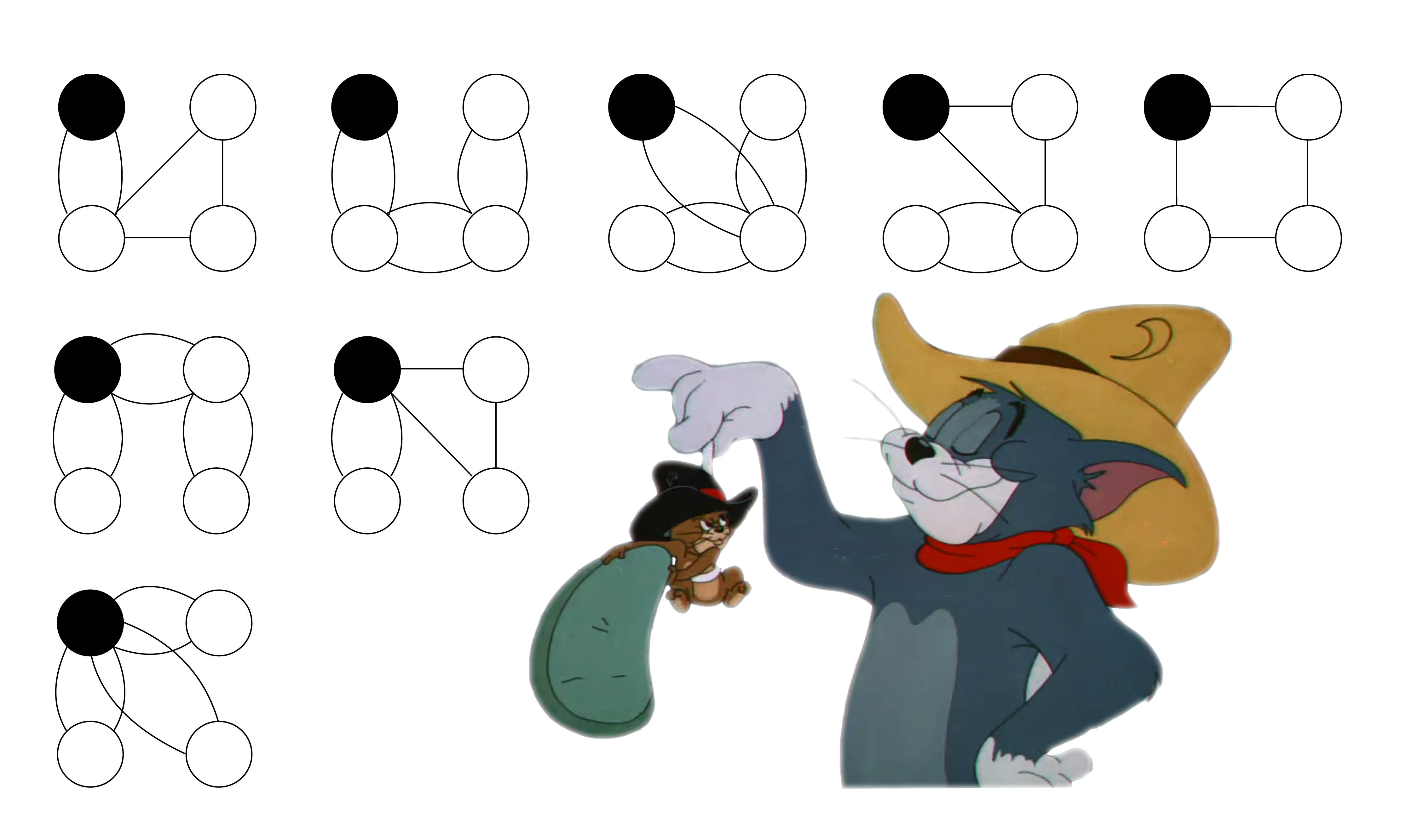
| Online Judge | Online Exercise | Online Teaching | Online Contests | Exercise Author |
|
F.A.Q Hand In Hand Online Acmers |
Best Coder beta VIP | STD Contests DIY | Web-DIY beta |
Desert
Time Limit: 24000/12000 MS (Java/Others) Memory Limit: 262144/262144 K (Java/Others)Total Submission(s): 67 Accepted Submission(s): 27
Problem Description
Tom and Jerry got lost in a desert. But they are not bored or afraid at all, because they found a truly interesting thing to do: researching the varied kinds of kakti in the desert!
After careful observations, they found that a kaktus can be seen as a graph consisting of several nodes. To be precise, an $n$-node kaktus is an undirected connected graph that has only $1$ node as the root, in which every edge belongs to exactly one simple cycle and all nodes are unlabelled. You can refer to sample case for a better understanding.
Finding something new is always exciting, but it brings them new doubts.
"How many different kinds of $n$-node kakti are there?" wondered Tom.
"Your problem is simpler than mine. I am wondering how many different kinds of $1,2,3,..,n$-node kakti there are." said Jerry.
After careful observations, they found that a kaktus can be seen as a graph consisting of several nodes. To be precise, an $n$-node kaktus is an undirected connected graph that has only $1$ node as the root, in which every edge belongs to exactly one simple cycle and all nodes are unlabelled. You can refer to sample case for a better understanding.
Finding something new is always exciting, but it brings them new doubts.
"How many different kinds of $n$-node kakti are there?" wondered Tom.
"Your problem is simpler than mine. I am wondering how many different kinds of $1,2,3,..,n$-node kakti there are." said Jerry.
Input
One line containing a number $n$ ($1 \leq n \leq 10^5$).
Output
$n$ lines, each line containing a number, the number of $n$-node kakti.
As these numbers can be very large, output them modulo $998244353$.
As these numbers can be very large, output them modulo $998244353$.
Sample Input
4
Sample Output
1 1 3 8
Hint
Here are the 8 4-node kakti.

Source
| Home | Top |
Hangzhou Dianzi University Online Judge 3.0 Copyright © 2005-2025 HDU ACM Team. All Rights Reserved. Designer & Developer : Wang Rongtao LinLe GaoJie GanLu Total 0.001000(s) query 1, Server time : 2025-04-04 05:05:03, Gzip enabled |
Administration |